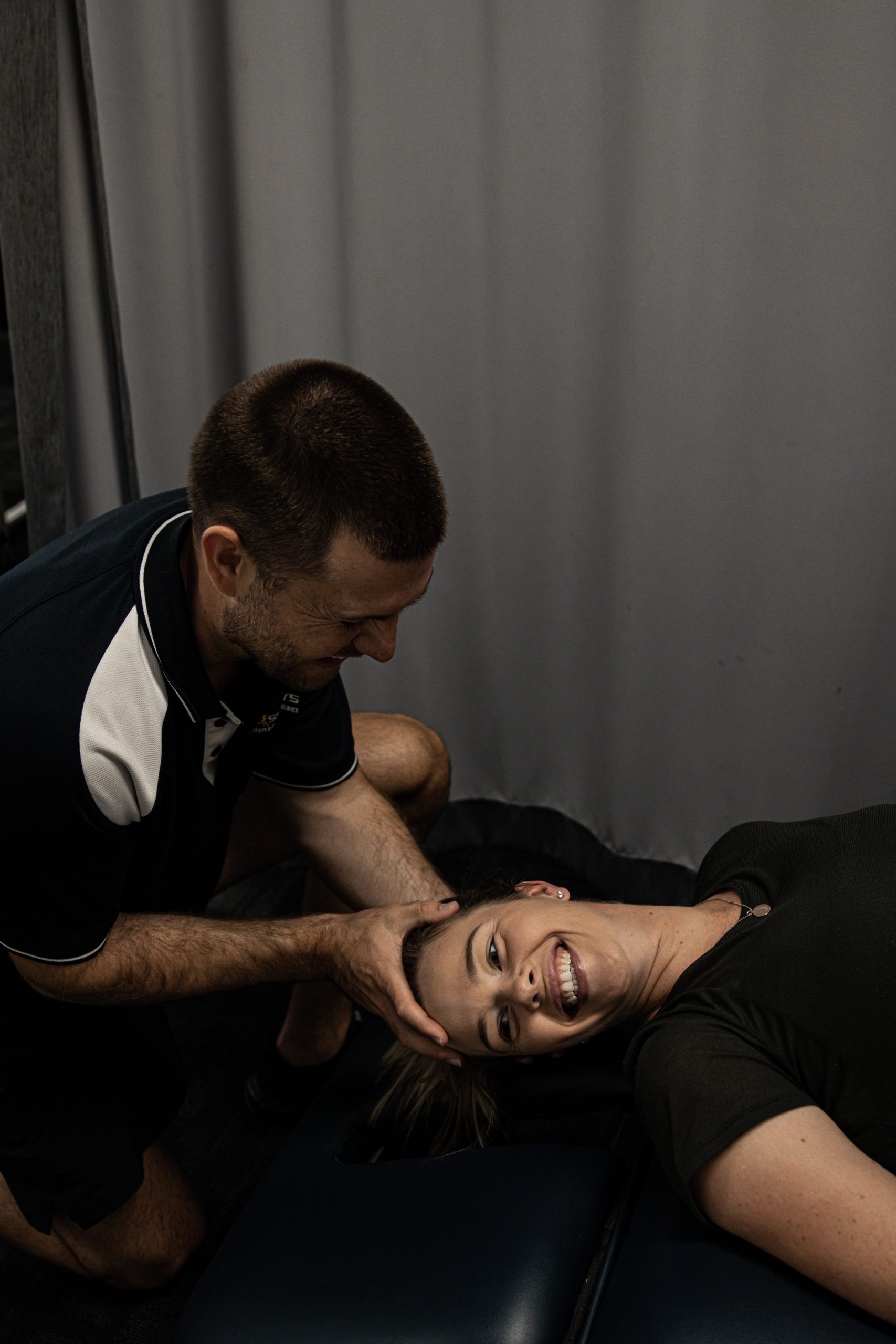
What is vertigo?
Vertigo is a term commonly used to describe various sensations of dizziness. The technical definition of vertigo refers specifically to the perception of motion when there is no actual movement. Vertigo occurs due to a disturbance in what’s known as the vestibular system. The vestibular system is responsible for telling our brain when our head is moving and it allows us to keep our vision steady during movements. For example, when we are walking, the vestibular system is what allows us to turn our head to the left while keeping our eyes forward so we don’t fall over.
The vestibular system is a sensory apparatus that lies within the inner ear, which is why you may have heard people say that your ears are responsible for your balance! The inner ear is located within the bony labyrinth of the temporal bone and contains the cochlea, semicircular canals & the otolith organ.

Figure from https://www.brainkart.com/article/Vestibular-Apparatus—Control-of-Posture-and-Movement_21021/
The way the inner ear detects head movement is by the movement of fluid disrupting hair cells within the three semicircular canals. The otolith organ contains calcium carbonate crystals (otoconia), which provides inertial mass, to allow movement to be relative to gravity.
What causes vertigo?
Various conditions can cause of vertigo including:
Benign Paroxysmal Positional Vertigo (BPPV): This is the most common cause of vertigo.1 BPPV occurs when hardened otoconia (or canaliths) dislodge from the otolith organ and move within one of the semi-circular canals. This disrupts the normal flow of signals to the brain causing symptoms of dizziness, typically lasting for a few seconds to a minute. The vertigo is usually triggered by specific head movements, such as rolling over in bed, looking up or down, or tilting the head. Rapid, involuntary eye movements, known as nystagmus, often accompany BPPV.2
Vestibular Neuritis: This condition results from inflammation of the vestibular nerve, which plays a crucial role in balance and spatial orientation. It is typically caused by a viral infection and leads to sudden and severe vertigo, accompanied by nausea and disruptions to balance.
Meniere’s Disease: This is a chronic condition that affects the inner ear. Meniere’s disease is characterised by recurring episodes of vertigo, fluctuating hearing loss, tinnitus (ringing in the ears), and a feeling of fullness of pressure in the affected ear.
Migraine-Associated Vertigo: Some individuals with migraines experience episodes of vertigo during migraine attacks, which can be intense and debilitating. These episodes are often accompanied by headaches, light sensitivity, and visual disturbances.
Labyrinthitis: This condition arises from inflammation of the bony labyrinth, the structure within the inner ear responsible for detecting motion and gravity. Labyrinthitis can result from a viral or bacterial infection and causes severe vertigo and hearing loss in the affected ear.
Head Injuries: Trauma to the head can disrupt the inner ear’s delicate structures, leading to vertigo.
Certain Medications: Some medications, especially those affecting the inner ear or the brain, can induce dizziness and vertigo as side effects.
As physiotherapists and given BPPV is the most common cause of vertigo, BPPV is the most common condition we treat! The Dix-Hallpike manoeuvre is a common test used to diagnose BPPV, and is included in conjunction with other vestibular tests. During the Dix-Hallpike test, the patient’s head is quickly moved into specific positions to provoke vertigo and nystagmus, helping to identify which ear is affected and which canal is involved. The posterior semicircular canal is the most common involved accounting for 85-95%3 of BPPV episodes.
Treatment of BPPV involves a canalith repositioning manoeuvre, which is a series of head movements done in a specific order to guide the otoconia or canaliths out of the affected semicircular canal and back into the utricle of the inner ear. This is highly effective in resolving the symptoms of vertigo in BPPV.
A thorough assessment is important during episodes of vertigo as treatment and management is dependent on the underlying cause. However, although vertigo a complex condition, it can be understood and managed with the guidance of a vestibular physiotherapist.
If you are experiencing symptoms of vertigo, a vestibular physiotherapist is well trained in assessing and diagnosing vestibular disorders. They will perform a comprehensive evaluation to identify the underlying cause of your vertigo. This accurate diagnosis ensures targeted treatment as each vestibular disorder requires specific treatment approaches.
- von Brevern, M et al. 2015 ‘Benign Paroxysmal Positional Vertigo: Diagnostic Criteria’. Journal of Vestibular Research vol 25, p105–117, DOI 10.3233/VES-150553
- Epley JM. Positional vertigo related to semicircular canalithiasis. Otolaryngol Head Neck Surg 1995;112:154-61. [PubMed]
- Bhattacharyya N, Baugh RF, Orvidas L, et al. Clinical practice guideline: benign paroxysmal positional vertigo. Otolaryngol Head Neck Surg 2008;139:S47-81. 10.1016/j.otohns.2008.08.022 [PubMed]
